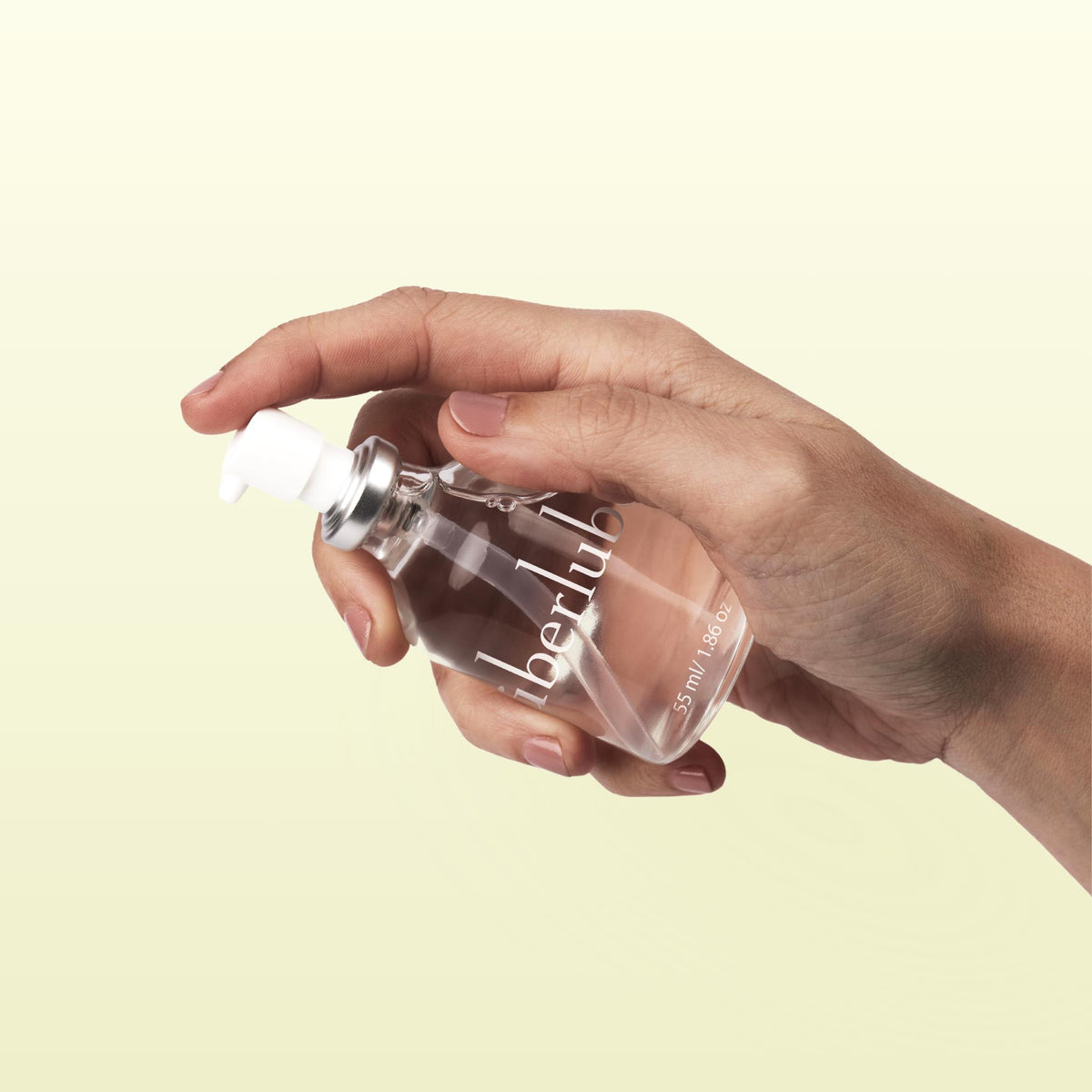Oral sex is the loophole for safer sex, right? Unfortunately, it’s not. You can still catch STDs and STIs from oral sex, though you probably weren’t taught that in your high school sex-ed class. Oral sex doesn’t equate to safer sex. But fear not! There are ways to stay safe and still have fun.
Oral sex involves using someone’s mouth, tongue, or lips to stimulate another’s genitals or anus. The practice is known as cunnilingus for oral-to-vulva, fellatio for oral–to-penis, or rimming / rim job / anilingus for oral-to-anus. Oral is an extremely common sex practice for people of all genders and sexual orientations. According to a 2014 study, 85% of men and 83% of women have given oral sex.

We’ll use both STD and STI in this piece, but there is a difference! Sexually transmitted diseases are the result of an infection. However, not all sexually transmitted infections result in disease. For example, cervical cancer is a disease, and HPV is an infection.
How, exactly, can you get an STI from oral sex?
There are two ways people can get an STI from an infected partner: from skin-to-skin contact, or from bodily fluids such as blood, semen, vaginal fluid, rectal fluid, or pre-seminal fluid (pre-cum). Both of those methods of transmission can happen during oral sex, just as they can during intercourse. If your partner has an STI in their mouth or on their genitals, there’s a good chance that they can transmit it to you, depending on the type of STI.
According to the Mayo Clinic, even if someone has no visual or physical symptoms of an STI, it is still possible to pass one to a partner. The only way to know if someone has an STI is to get tested; you can’t rule out the possibility with just a glance.

Which STDs can you get through oral sex?
According to the CDC, approximately 110 million people in the US have an STD. You might be surprised at how many STIs can be transmitted during oral sex:
- herpes
- human papillomavirus (HPV)
- chlamydia
- gonorrhea
- syphilis
- trichomoniasis
- Hepatitis A and B (from oral-anal contact)
- Human Immunodeficiency Virus (HIV)
Herpes
Herpes has two main types, herpes simplex virus type 1 (HSV-1) and herpes simplex virus type 2 (HSV-2). HSV-1 most often causes sores around the mouth or lips. 50-80% of adults in the US have oral herpes. HSV-2 generally causes sores around the genitals, and about one in six people in the US are estimated to have genital herpes.
A 2019 study out of Weill Cornell Medical found that the risk for herpes transmission is higher during oral sex than during intercourse. Why is that? You can actually get HSV-1 and HSV-2 on both your genitals/anus and your mouth, increasing the risk. The study found that over 85% of new genital herpes cases were transmitted through oral sex, rather than through intercourse.

Here’s another reason that herpes transmission is high during oral sex: did you know that what many people call cold sores are actually herpes? Many people don’t even know that they have herpes because they’re not aware that cold sores are actually herpes. And a large percentage of people with herpes only ever have one active outbreak or are completely asymptomatic. But unfortunately, you can also transmit herpes even if you do not have an active outbreak, particularly in the period before you notice an outbreak and the 4-5 days after it has cleared up.
Human Papillomavirus (HPV)
We typically think of HPV as a cause of both genital warts and abnormal cells on the cervix (often discovered during a pap smear) that can lead to cervical cancer – which is true. But HPV can also be transmitted to the throat through oral sex, and certain strains can also cause throat cancer. According to Yale Medicine, 70% of oropharyngeal (throat) cancers are associated with HPV transmitted via oral sex. Throat cancers have also been on the rise over the past decade, particularly in men.

The reality is that HPV is extremely common, affecting nearly 80% of sexually active people at some point in their lives. While most people’s immune systems are able to fight off HPV, there is no cure for it, and in some cases it can lead to more serious health problems like cancer. There are over one hundred strains of HPV, but there is a vaccine that protects against 9 of the highest-risk strains. It is recommended for boys and girls beginning at age 11, but many adults still have not been vaccinated.
Chlamydia

According to the CDC, chlamydia is the most commonly reported bacterial STI in the United states, accounting for at least 4 million cases in 2018. But true numbers are hard to calculate since most cases are asymptomatic, so the person doesn’t even know they have it and can easily pass it on to a partner. You can contract chlamydia in the throat, genitals and rectum, and if untreated can cause long term damage to the reproductive system and lead to secondary infections and even gum disease. But luckily it can be treated with a quick round of antibiotics.
Gonorrhea

Gonorrhea is also a bacterial infection, and the CDC estimates that there were 1.6 million new cases in the US during 2018. Again, many cases are asymptomatic, and so many people pass it on to their partners unknowingly through oral or penetrative sex. If untreated, gonorrhea can also cause long term reproductive issues, and oral infections can even spread through the bloodstream to other parts of the body. It’s also treated with a course of antibiotics.
Syphilis

Syphilis might sound like an old-timey disease, but it is definitely still active in the world. It can be spread by intercourse, oral sex, and even kissing due to the painless sores or rash that can appear on the mouth, lips, throat, genitals, or rectum. If left untreated, symptoms might seem to go away, but syphilis can continue to do damage to the brain, nerves, eyes, or heart that might only be discovered years later. It’s cured by a simple course of penicillin.
Trichomoniasis

Trichomoniasis (aka trich) is a common STI caused by a protozoan parasite and around 70% of people with trich are asymptomatic. When symptoms do occur, in women the symptoms might include itching, burning, or soreness, as well as abnormal discharge and discomfort while peeing. In men in can include itching or irritation inside the penis, burning after peeing or ejaculation, and discharge from the penis. According to the CDC, there have been a few cases of trichomoniasis transmission from genitals to throat, but not the other way around.
Hepatitis A & B

Hepatitis viruses can cause liver inflammation and damage and certain strains can be transmitted during oral sex. Hepatitis A (HAV) is a virus that is most often transmitted through oral contact with feces, so rimming (aka analingus or a rim job) does have that risk – though most people in the United States are vaccinated as children. Hepatitis B (HBV), on the other hand, is 50 to 100 times more infectious than HIV, and it has been found in vaginal secretions, saliva, and semen. There is not clear data on how transmissible it is through oral sex, but regular STI testing is recommended. Children are routinely vaccinated for HBV, but only 25% of adults have been vaccinated.
Human Immunodeficiency Virus (HIV)
The risk of getting HIV during oral sex is quite low but not entirely nonexistent—the risk is much higher from penetrative vaginal or anal sex.
A Note on Oral During Menstruation

Giving oral to someone on their period can increase your oral STI risk. Menstrual blood can carry STIs such as hepatitis and HIV, and more fluids involved with menstruation might equal higher risk.
What to do if you think you might have received an STI from oral sex
First step? Take a deep breath. STIs are extremely common.

Many STIs do not have any symptoms. But when symptoms of oral STIs do occur, they may include a sore throat, difficulty swallowing, swollen tonsils or lymph nodes, and blisters, sores, or lesions around the mouth and lips.
As a sexually active person, it’s wise to get tested regularly, regardless whether you think you have an STI. If you may have come into contact (sexually!) with someone who has an STI, schedule an appointment with your doctor and ask for a full panel STI test. Your county or city health clinics, many local LGBT+ centers, and Planned Parenthood offer free STI screening if you don't have insurance.
Many STIs are treatable with antibiotics, but it’s best to get them taken care of as soon as possible because they can spread throughout the body. Some STIs, such as herpes, are not curable, but medications can prevent and/or shorten the length of outbreaks.
How to have safer oral sex
Hundreds of millions of people worldwide have STIs that can be transmitted via oral sex. But staying safe is in your hands, and one of the primary ways to protect yourself is by using barriers during oral.

A 2018 study published in the Journal of Adolescent Health sought to explore whether condom use with oral sex was common and found, unsurprisingly, it’s not. The study mainly examined the prevalence of condom use among heterosexual young adults. However, the lack of protective barriers during oral sex appears to be a widespread practice among varying identities.
Another 2018 study in the Journal of Adolescent Health found that among sex between people with vulvas, adolescents were less likely to use barriers and named lack of knowledge of sexual risk as a chief reason why. Many people don’t know that you need protection during oral because many have not learned that it comes with risk! We’re here to correct any knowledge gaps and praise the heck out of protection.
Rest assured, there are plenty of ways to decrease your STI risk from oral sex.
- Use a barrier method. These are super thin barriers that block STIs and bacteria from transferring between partners during sex. There are different kinds for different anatomy/types of oral sex:
- Lorals for Protection are ultra-thin latex undies that you can use for cunnilingus and rimming (for people of all genders). Lorals are designed to make safe sex fun and sexy, all while making it feel like you’re wearing nothing at all!
- Condoms: they’re not just for intercourse! If you’re going to be giving or receiving felatio, external or “male” condoms are a great way to keep both partners protected, and they come in a lot of different flavors to explore.
- Avoid flossing or brushing your teeth immediately before oral sex. Why? Both flossing and brushing can cause micro-cuts in your mouth that increase the susceptibility to getting an STI.
- If you see any lesions, sores, lumps, or bumps on your or your partner’s genital, anus, or mouth, best to avoid oral until you’ve received a negative STI test.
- Avoid oral sex if you or your partner has an active cold sore or cuts on their mouth.
- If you or your partner has a throat infection, skip oral.
- Vaccination: some STIs, like HPV and Hepatitis A & B, have very effective vaccines available, which you should consider if you haven’t already received them.
- Don’t perform oral with a new or unhealed lip or tongue piercing.
We hope we’ve clarified a few misunderstandings about oral sex and STIs (yep, you can get them). STIs are a part of life, but education and awareness can help keep pleasure safe!
Written by Xenia Ellenbogen, (she/they), a freelance reproductive health and mental health writer. She focuses on reproductive justice, LGBTQIA+ news, menstrual equity, and trauma. She holds a BA in writing from The New School.
Reviewed and Edited by Sarah Brown, (she/her), a certified sex and intimacy educator with 10 years of experience designing and marketing intimate wellness and pleasure products.




























